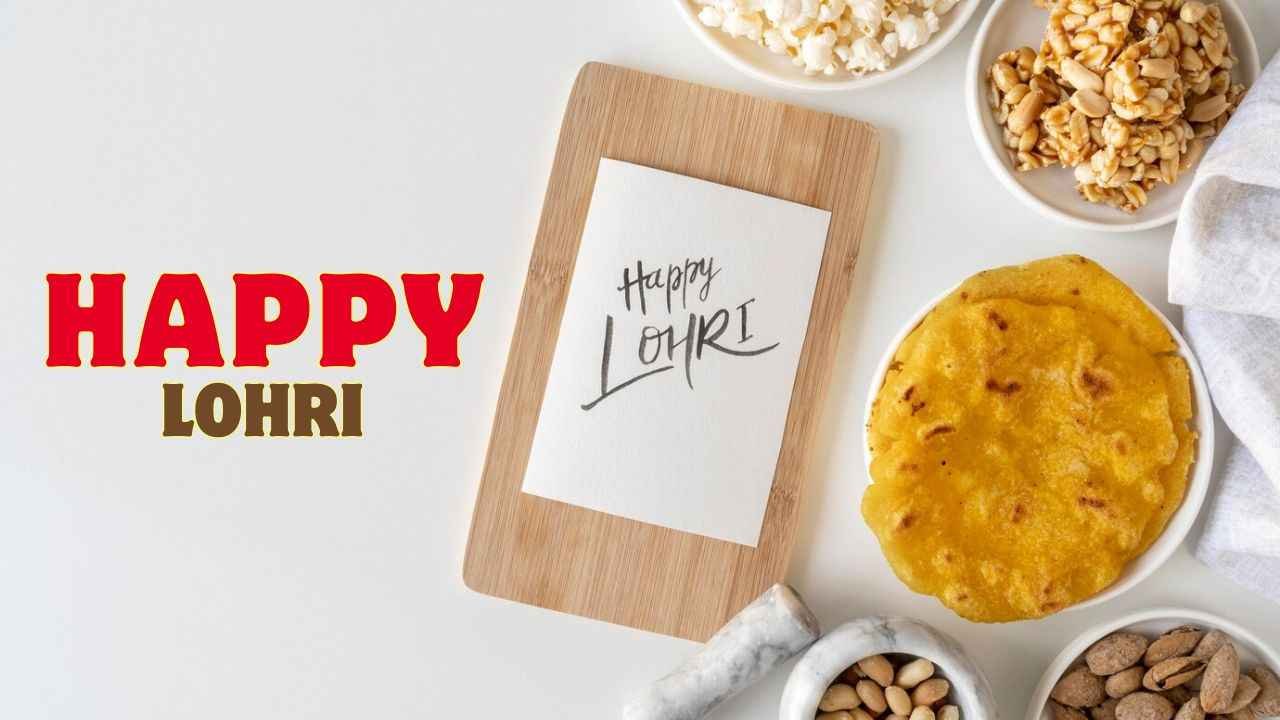
Lohri Festival of India
The origin of this term is doubtful but suffice it to say that it has some connection with fire. This is the famous festival of Punjab now celebrated in many countries where the Punjabi people have reached. Since Punjab is essentially the land of agriculturists, this function has a direct bearing on agriculture and farming.
This festival occurs on the 13th day of January in the month of Paush or Magh, a day before the famous festival of Makar Sankranti. It is celebrated in the biting cold of the winter season when the winter rains are about to come or have already come.
Having toiled right since October when the seed is sown for the Rabi crop the chief crop of north India-till middle of January for the protection of the plants of wheat and grain through the most rigorous conditions, when the farmers see that the grain has begun to form, they become delighted. Seeing gold (when ripening the wheat fields gives the impression of gold) spread all around the owners and peasants’ joy knows no bounds after all that trouble, intense toil and sweat they have put in, they decide to celebrate the heavenly reward in the form of ripening crops.
Also, once the grain starts growing the farmers do have not to devote much attention to the field except for general care, they have ample time to celebrate. Since around this time of the year, the cold is very intense, they could find no better way to celebrate by lighting a bonfire and dancing around it. The festivities include the boisterous Bhangra dance which ideally suits the occasion since its fast movements generate enough heat in the body to fight off the freezing cold and enjoy.
On Lohri, dancers perform the Bhangra in a ring around the fire. The fire is offered ‘Chivra’ (beaten rice), ‘Meva’ (dry fruits), til-gur-revri (sesame seeds’ sweet preparations believed to keep the body warm) and ‘gajak’ (another variety of sweetened sesame seeds with Jaggery or sugar) by each individual. Then the fire becomes the deity of the occasion. It is considered consecrated with no one allowed to throw leftover food items or those that have been partially eaten into the fire. While moving around the people keep on chanting ‘Aadar aaye, dalidder jaye’ (let prestige and prosperity come to our homes and adversity and poverty be thrown out of it forever).
Circumsembling the holy fire is compulsory before anyone joins the celebration. All the participants are served the typical food items mentioned above by the householder who celebrates the function before his home.
Lohri is an individual’s function but is celebrated collectively. Sometimes many houses join hands to celebrate the occasion with other persons in their vicinity. Many urchins move in groups performing antics with improvised poems like “Aayee mai de ke ja; daari mauch munda ke ja” (a funny composition asking the moustache and beardless ladies to give the boys money for celebrating the Lohri ) and similar other rhythmic and often meaningless couplets joined together in a long song.
Dhaula Bhatti, the special hero of this festival. This was the tale of a man who rescued a girl from her cruel abductors and adopted her. Finally, he arranged for her marriage as if she were his own daughter. These songs exhort the youth to protect the honour of their sisters and daughters and punish those who try to dishonour them.
According to yet another explanation it is said that our forefathers formulated a secret ‘Mantra’ (formula) which rescued them from the cold. This mantra invoked the Sun God to send them so much heat that the winter cold might not affect them. And in thanksgiving to the Sun God, they chanted this ‘Mantra’ around the fire on the last day of Pausha (month). The ‘Lohri’ fire is symbolic of the homage to the sun. Heralding the point of decay of the intensity of the cold in winters a song customarily declares at this occasion :
Gone shawls and braziers where,
To the golden mountain, Act
Gone the golden mountain to where,
To the radiant sun
Gone where the sun itself,
To the fire;
The fire burns, the ray warms
The snows melt, the cold is old.
The ancient believed that the flames of the fire they lit took their message to the sun, and that is why on the morning of Lohri, suddenly turn warm and take the chill out of our bones.
the sun rays This explanation highlights again the spirit of accomodation of the people to the natural change to brace themselves with the vagaries of it. Astrologically 13th January 14th January is that span of a period in which the Sun becomes mobile towards north in the prima facie viewing. In Sanskrit, it is called the sun becoming Uttarayan or tilted towards north. Since its that tilt changes the gradient of its incident ray upon the earth, the rays of sun become somewhat vertical which eventually enhances their heat intensity reaching the earth’s particular hemisphere. Having experienced the warmth of the sun growing, our ancients-must be living that time amidst the snow-clad mountains decided to celebrate the day as the festival.
How this name (‘Lohri’) became recognized that way is related to again a medical fact. The sesame seeds (til), ‘gur’ (jaggery) and groundnuts are known as the protein rich items whose end effect is keeping the body warm. May be that was the formula’ our ancients must have discovered then. Eating ’til’ (Sesame seeds products like gajak, revri, til-laddoos, etc) and ‘rorhi’ (ancient Punjabi term for gur or jaggery or molasces) is considered essential on this day particularly sitting around the bon-fire. So these two terms (til + rorhi ) combined to coin the word Tilorhi which eventually corrupted to the term that has gained popularity now-‘Lohri’.
There is, however, yet another reason recounted apochryphally which says that in olden times, human beings lit fires to keep away flesh-eating animals and protect their habitations. Everyone contributed to this communal fire, for which young boys and girls collected fire wood from the jungle. That is why even today when we burn cowdu cakes it is teenagers who go around collecting them. The Lohri bonfire is symbolic of our old method of protecting ourselves as well as a form of fire worship. It is the auspicious Lohri fire that couples prayers of people of all categories to the parents a son, to the. unmarried woman or girl marriage, to the unemployed work, to the poor riches and what not? When people throw sesame seeds in the fire they ask for sons. The saying is as many (til seeds) as the elder brother’s wife throws in the fire, so many sons his younger brother’s wife will bear’. That is why in homes where there is a newborn son or a newly wed man, Lohri is celebrated with even greater enthusiasm, and sweets made of gur and til are sent to the relatives and friends.
Its special significance for the agriculturists culture is because Lohri marks the beginning of a new financial year’ because on this day they settle the division of the products of the land between themselves and the tillers.
On the eve of Lohri the most popular song sung by groups of boys invariably ends with the exclamation : ‘ho! like :
Its a pretty ring, ho !
Who owns you, ho !
Little children sing songs which surprisingly in a society supposedly not enamoured of education in those days, presage their days at school and proudly claim that there is ghee in my inkpot. Inherent in this is a belief that like ‘ghee’ (Clarified butter) education would open the doors of my wisdom.
At last dawns the Lohri day. The piled up collections of the cow-dung cakes, fire wood, etc. are consigned to fire. The headman of the locality or the householder of the house celebrating Lohri especially makes his wife to arrange for a gala feast. She has a bucket full of sugarcane juice and huge vessels filled with rice and lentils to make a pudding. She has also put freshly cut mustard leaf in the cooking pot. The moral behind this ritual is that good health is real wealth. We know only too well that winter’s cold (at least in North India) almost freezes our blood in veins (at least for those who work in the open fields). We survive the cold days by warming ourselves before the fire and eating food that warms the blood. At the beginning of the month of Magh, it begins to course with renewed vigour. Before that happens it is necessary that our bodies are cleaned from within. Eating a lot of spinach, mustard leaf and lentil pudding cooked in canejuice is recommended because these food ingredients do precisely the same.
It is a festival when everyone remains active not only in the preparation but also in the actual celebration of the festivities. Womanfolk remains much more busy because they have also to participate in the Gidda’ dance. The youngsters indulge in a lot more acrobatics to the mesmerising rhythm of Dholak and Nagara. These dances continue well into the night with fresh people gradually replacing the tired ones without causing any break in the festivities. The women dance entails more play of the body and the arms in quick and graceful movement. While a couple of women keep on occupying the centre stage to guide the other, the rest clap to the beat of dholak standing in a line. They catch hold of each other’s hands and also perform another joint dance movement called ‘keekali’ which involves going round and round with their own hands crossed and holding the crossed hands of a partner and twirling very fast in a given area. The men perform famous Bhangra dance in which the main rhythmic movements involve the outstretched arms with hands also outstretched or kept up and constantly flared; the shoulders are rhythmically jerked and the steps move according to the Dholak beat. There is no hard and fast rule about these dances since the dancers express their jubiliation with gay abandon.
It is an especial festival for the newly weds and newly borns. Attired in their choicest and most colourful clothes, adorned with as many jewels and ornaments as one’s body could conveniently hold, the newly wed brides and the mothers with their infants dance around the fire. Everyone is invited to join the fun without any inhibition.
It is also a festival of gifts. The mother-in-law customarily presents heavy garments and jewellery to the new bride. The new brides have to stay at their in-law’s house to celebrate this festival. On this occasion a grand feast is arranged and all sons and daughters of the house with their spouses and children and all their close friends and neighbours are invited.
Food served on this day is choicest but generally no alcoholic drinks are offered. It is a festival of bonhomie and amicability, not only between man and man but also between man and nature.
The biting cold night lit up with scores of holy bonfires, the people dancing and prancing in jubiliation and glee on the maddening beats of dholak and ‘nagaras’. Lohri is a festival of the race that knows how to work in bone-breaking labour, with most foul vagaries. of nature and yet overcome them with their determination and resolve. No wonder it has spread far and wide from its place of origin and now not only in most parts of India but abroad also it is celebrated with great verve and style.

